Last updated on March 11, 2024
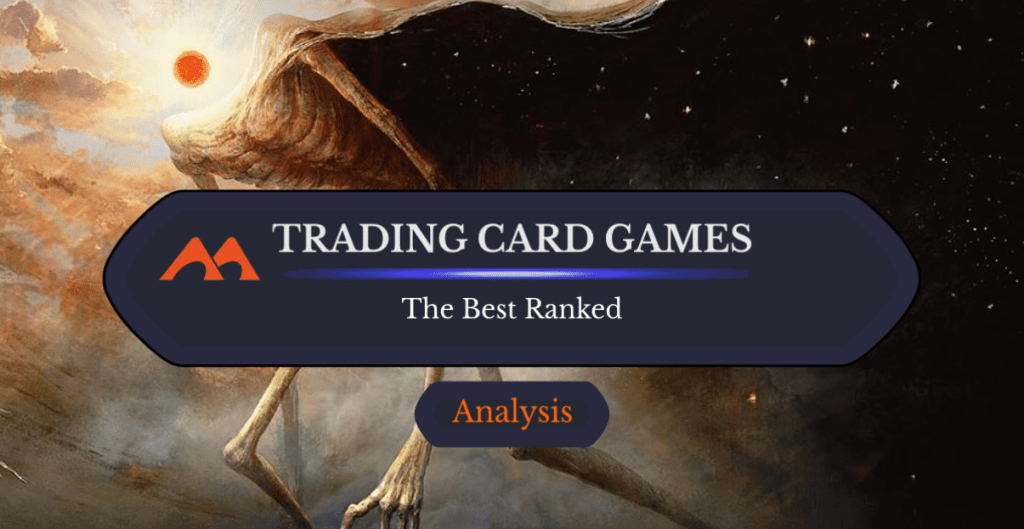
Soulherder | Illustration by Seb McKinnon
While Magic might be my favorite trading card game, that doesn’t mean that I’m not interested in what else is out there, and I imagine some of you probably feel the same way. Whenever a new trading card game comes out, I’m usually cautiously optimistic about its unique mechanics and design. However, if you play Magic you also know that getting into a new TCG can take time and money, so it’s nice to have some idea if you’ll like the game before you play it.
My goal here isn’t to persuade you to stop playing Magic in favor of another game, or to say you have to try any of the alternatives. This is more a guide if you’re curious what other options might be out there and which are good for what reasons. I’ll be using multiple criteria to rank these games, so if you weigh one of these sections more heavily than others, a game lower on the list might actually be more appealing to you if it’s really good at what you like.
I’m going to be exploring these TCGs from the perspective of both a player and a collector. That means I’ll be ranking games based on how accessible they are to play, how fun they are, and the ways to play. I’ll also be looking at how much cards cost and what if any value they hold.
What is a Trading Card Game (TCG)?

Skygames | Illustration by Sam Burley
A trading card game is a game where players build decks to play with from a pool of collectible cards. Because cards are mainly sold in randomized booster packs, these games encourage players to trade with one another in order to create an optimized deck. This often creates a secondary market surrounding the game where players can buy the individual cards they need as opposed to relying on trading or booster packs.
A few things that aren’t trading card games but are similar include: baseball/sports cards, limited card games, deck-building games, and other types of card games that don’t include booster packs. While sports cards are bought in booster packs and have a collectible aspect similar to TCGs, there is no game you can play with them.
Conversely, limited card games or deck-building games may include a main game and expansions, but you always know which cards you’ll be getting when you buy a product. This means that cards don’t hold individual value in the same way as they do in TCGs because you know you’re guaranteed to get them by buying a specific product. This puts a pretty clear ceiling on how much someone would be willing to pay for an individual card in the game. For similar reasons, other card games like Keyforge that don’t have deck building aspects or booster packs can’t be considered TCGs.
Honorable Mention: The Spoils
The Spoils is an old dead TCG, so I’m not going to be evaluating it by all the same metrics as the games on this list that are still in print. That being said, I wanted to mention it here because it is a lot of fun.
One aspect of The Spoils I thought was great was that it allowed you to play any card in your hand as a resource. This kept you from getting “mana screwed” as frequently as you might in Magic, but prevented the necessity for rules like Yu-Gi-Oh!’s limit on how many monsters you can normal summon in a turn. A similar mechanic is now being used in Disney Lorcana.
The Spoils also had a very unique look and sense of style. While Magic and other card games do have some humor on their cards, they usually aren’t as overtly funny as a lot of the cards from The Spoils were. There were cards like Pwny Bomb and Jacque’s Trap (seen below) that made opening a pack of cards just a little more fun, even if the cards themselves weren’t the best.

The world of the game had a very grimy feel to it that helped enhance the comedy and also make it stand out in contrast to the more polished look of other card game worlds. This added a lot of texture to the world, as seen in the card Leaping Sarume below.
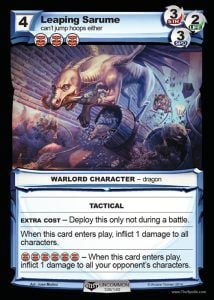
Some of the jokes are a little dated and off-color, so I can understand someone not enjoying this game as much. That said I definitely think it’s worth looking into if that doesn’t bother you. It’s also a bit cheaper to buy in large quantities now that the game’s dead.
Honorable Mention: Yu-Gi-Oh!
I put this game as an honorable mention because in my opinion, it isn’t one of the best TCGs. That said, it has a loyal and dedicated fan base and I understand that my personal opinion isn’t necessarily a popular one when it comes to this game.
Accessibility: Yu-Gi-Oh! is a card game that seems to constantly be in flux. Instead of innovating on its core mechanics, the game seems determined to reinvent itself every few years. This makes it difficult to keep up with both from a rules standpoint and for players whose old decks stop being relevant.
Another thing I don’t love about Yu-Gi-Oh! is that there are more rules you need to simply remember that aren’t printed on the cards. For example, you can only normal summon one monster per turn, or if you want to normal summon a level 5-6 monster you need to sacrifice an existing monster as tribute. The more rules that don’t explicitly appear on a card or are referenced by a specific keyword, the more difficulty new players will have with keeping track of everything.
A positive aspect of the game is that it can be pretty inexpensive to pick up a starter deck. While these decks aren’t competitive out of the box, if you just want to play with friends you can get some for around $10 which is really good for a TCG.
Fun: Cards on the table, I think I might hate Yu-Gi-Oh! now. It was the first TCG I got into and it used to be a lot of fun, but now games seem to end way too quickly. Turns are longer with a lot more game actions, but when a game ends in 2 or 3 turns consistently, it often results in a lot of sitting around and waiting for the 40-minute round timer to tick away.
That said, this sort of fast gameplay can actually make Yu-Gi-Oh! appealing if you’re looking for a quicker game to play with friends. Quick turnarounds mean more games and more potential different matchups. If you like card games for the competitive aspect, I think Yu-Gi-Oh! is for you, but it isn’t for me.
Ways to Play: There are four official Yu-Gi-Oh! formats: Advanced, Traditional, Speed Duel, and Common Charity. Advanced allows players to play with any card released, with the exception of some on a ban list. Traditional is rarely played and allows players to use all cards, though some are limited to fewer copies instead of being outright banned.
Speed Duel is a format with altered rules to help new players learn the game, though I contend that it’s kind of harder to get into the game when you have to relearn a bunch of rules just to play the other formats.
The final format is Common Charity, which is basically the same as MTG’s Pauper format. All cards in your deck must have, at one point, been released as a common card.
Another downside to Yu-Gi-Oh! is that it isn’t really draftable. While you technically can, the game isn’t designed for it. This is because synergy is much more important in the game, so there are less generally good cards that can work with a wider range of other cards.
Art: Art is subjective, and I know there are people that love Yu-Gi-Oh!’s art. That said, I think it’s ugly and overdesigned. That's just me, though. Here are a few examples:
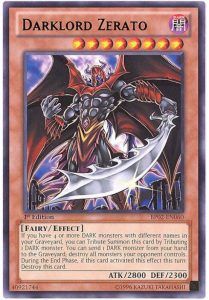
Darklord Zerato reminds me of an ugly Rob Liefeld character, with too many muscles, too many impractical spike bracelets, just all edge no substance. Salmangreat Beat Bison on the other hand is just so busy that I don’t like looking at it for more than a few seconds. It also blends into the background, making it look like a blob of color and therefore less recognizable as a distinct card without reading its text.
Other cards just seem sort of half-baked like Penguin Soldier:

The design is just very bland, and like most Yu-Gi-Oh! monsters it’s just standing in a blank void, giving no interesting context like the world this creature comes from or what it’s even doing. Some spell cards have slightly better art, but it’s a big disappointment when the cards that stay on the field longer are also the ugliest ones in the game.
Cost of Cards: There are some pretty valuable collectibles in Yu-Gi-Oh!, usually rare cards from early editions. For example a first edition Blue-Eyes White Dragon or Dark Magician can be worth a pretty penny.
Some newer cards are also pretty expensive too, for example WANTED: Seeker of Sinful Spoils from 2023 is about $90-100. Meta decks range from as low as $40 to as high as $800, so while the game isn’t insane to participate in, it can get pretty pricey at higher levels. Apart from the really rare cards, most Yu-Gi-Oh! cards don’t retain value for too long. This is because the game’s main format doesn’t rotate the way Magic does. Yu-Gi-Oh! relies heavily on new mechanics and power creep, outdating older cards and driving sales of new product. This means, unless your card is very rare and collectible in some way, you aren’t likely to be able to flip your cards if you hold on to them for too long.
#4. Disney Lorcana
Accessibility: Straightforward rules make Lorcana one of the easier card games to pick up. While there aren’t really too many innovative aspects of the game, that is a good thing when it comes to ease of access. If you’re somewhat familiar with TCGs you pretty much already know how to play.
Deck construction is pretty easy. You’re limited to one or two colors of cards, and they all use the same resources to be played. This means all you need is a good balance of cards that can be played as resources and a solid curve. The color limit also cuts down significantly on the possible decks that can be built, making it less overwhelming than a game like Magic that lets you mix and match with fewer limits.
That said, Lorcana loses some points on accessibility for me because of two factors: cost and availability. As of right now, stores don’t seem to carry large quantities of Lorcana, so if they aren’t limiting individual purchases in some way, they likely sell out fast.
Starter decks are around $20, which isn’t terrible, but boosters are pricey, close to $7-8 a pack. This means if you want to go beyond simply playing out of the box, it’s going to cost you.
Fun: I’ve enjoyed playing Lorcana, but I will say that it often leaves me wanting for more in-depth game play. Whether this is a result of the game being too new to have the complexity of its older competitors or because it wants to stay accessible is hard to say. I can’t give a final verdict on this section until the game has been out longer, but for now I’ll just say it’s enjoyable but not very deep.
Ways to Play: There are currently four tournament formats for Lorcana. Three fall under the Limited category, which includes Draft and Sealed, which are the same as in other card games, and Preconstructed, a tournament where players use only the sealed decks from the game.
The other format is Constructed. Currently, section 5.1 of the official Lorcana rules states that there’s only one constructed format Core, but also says that more may be added in the future. Though most tournaments I’ve seen are one-on-one, Lorcana cards are specifically worded to support multiplayer as well. Having played a few multiplayer games, it seems to work pretty well.
Art: The art on Lorcana cards is a mixed bag. The best cards are the ones that take advantage of Lorcana’s premise, that being you’re playing with weird multiversal versions of beloved Disney characters. These cards tend to have the more interesting and stylistic art, like Winnie the Pooh Hunny Wizard or Stitch Rock Star

Unfortunately, these seem to be outnumbered by slightly more generic looking cards and ones like Maleficent Monstrous Dragon that might as well be a retouched screengrab from a movie.

Cost of Cards: The most expensive cards in this game are the premium art versions of cards and the original promos that were released at D23. The nice thing about Lorcana is that if you just want to buy cards for function, the normal art versions top off around $30, with plenty of cards being worth a few dollars or less. This makes deck construction a lot cheaper than some other games, especially if you’re just playing for fun.
It’s hard to judge how much value the cards will hold over time, since the game has only been out since mid-2023. That said, the priciest cards have shown a pretty steady decline in their value over time. There’s Elsa whose current value is about 67% of what it normally was, and Sisu who’s down to about 50% of its initial worth. This trend is pretty consistent, and can be seen on Alice, Aurora, and Tinker Bell too.
That said, if the game has legs, some of these older cards might end up being worth something if they retroactively become better or are just seen as collectibles. For the moment, I wouldn’t plan on flipping any boxes, especially when they usually sell for $200 or more.
#3. Pokemon
Accessibility: I hadn’t played Pokémon in years before preparing to write this article, so I was pleasantly surprised to find how easy it was to pick back up. One thing Pokemon has going in its favor is that it plays similarly to the video games. If you have any experience with a Pokemon game, learning the card game should be pretty easy.
Pokemon has a range of premade decks that can help you get into the game, starting as low as $10 with the My First Battle decks, with slightly better preconstructed decks coming in around $15 or $20. I also think the Build & Battle Stadium products can be a fun option if you’re getting into it with a friend, significant other, or sibling. You’ll each get a premade deck and a few boosters to add in cards, which can give you a feel for how upgrading decks works.
Fun: I really enjoyed revisiting Pokemon for this list. Although the game is easy to pick up, it did have more depth to it than I was expecting, making me slightly more interested in playing longer than I was with Lorcana.
The battles feel like a good length, and the absence of a second main phase definitely kept the action moving.
I will admit some of my enjoyment with this game probably came from my nostalgia for the GameBoy Color days, so if you have no strong ties to Pokemon, you might not have as much fun.
Ways to Play: There are four official Pokemon formats: Standard, Expanded, Theme, and Legacy. Standard is similar to Magic’s version, including the four most recent sets with rotation each year. One cool thing about Pokemon is that they somewhat recently added regulation marks to their cards so you can easily tell which ones are in the current Standard rotation.
Expanded is like Pokemon’s Modern, allowing players to play with about 10 years’ worth of cards. This format has an extensive banned list to prevent any broken combos from ruining it.
Theme is a format where players are given premade themed decks to play with and can’t add cards.
Legacy is interesting; it’s an online-only format and has the biggest card pool. This is Pokemon’s main eternal format, so it’s kind of a bummer that there aren’t currently in-person events for it.
Pokemon is another game that’s unfortunately not made to be drafted.
Art: Pokemon cards are a bit of a mix when it comes to art. At its worse, some of the cards have the Yu-Gi-Oh! void problem. I noticed this especially on some of the V cards (yes, I know, but that’s what they call them). While it’d be nice to have a more interesting background, the art on the actual Pokemon do make up for it, and stop it from being as ugly as most Yu-Gi-Oh! art.

Some other cards provide a bit more context for where the Pokemon’s natural habitat is which is definitely a step in the right direction. You can see examples below with Glaceon and Arbok.
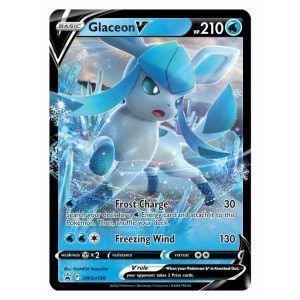
If this was all there was, I’d be disappointed. Luckily, there are some really cool art treatments, one of my favorites being the trainer gallery cards. These depict fan favorite trainers from the games or shows alongside the Pokemon that are known to be on their teams. These cards usually take place in a distinct scene as well, instead of just having a generic background:

Cost of Cards: Pokemon boasts the highest valued card I’ve ever seen from a TCG, the Pikachu-Holo Illustrator promo. There is currently only one copy of the card rated at PSA 10 which the card grading site values at an insane $4 million. Even lower graded versions of the cards are ranked in the hundreds of thousands.
The nice thing about Pokemon is, while some collectibles can be very expensive, actually playing the game isn’t as bad. You can easily find meta decks in the double digit price range, or slightly over $100. This makes Pokemon one of the cheaper games to get into if you want to play more competitively.
Older rare cards have definitely retained a lot of value, as seen by some of the absurdly priced collectibles I already discussed. However, if a card is expensive because it’s good in Standard, then it won’t be valuable for long.
Standard rotation in Pokemon happens every year, which is really fast. This means if you aren’t paying close attention to rotation and making sure to dump cards before they lose value, you could probably lose a significant amount of money if you’re treating Pokemon like an investment instead of a game.
#2. Flesh and Blood
Accessibility: I’ve played a lot of Flesh and Blood online and in person, and it’s one of my favorite TCGs. That said, I still feel like I have no idea what’s going on sometimes. The game is incredibly complex, and that’s exactly what I find appealing about it, but it definitely isn’t as beginner friendly as some other TCGs.
As far as price goes, trying out Flesh and Blood if fairly reasonable. You can find some Blitz decks for as little as $10. While there are other TCGs that also have decks at this price, the nice thing about Flesh and Blood decks is that some of these also come with powerful staple cards. The Briar Blitz deck comes to mind as an example.
Fun: One way I can tell a game is truly fun is when I’m enjoying myself even when I’m losing. Despite being somewhat hopeless at the game, I still really love playing Flesh and Blood. I like that decks are built around a specific hero, giving you a very strong attachment to that character in a way you don’t get in Magic even in Commander.
What this game lacks in accessibility it more than makes up for in complexity. Flesh and Blood is very complex on a strategic level which makes it incredibly satisfying when you do manage to pull off a big move. It also means lots of analyzing and tinkering which is one of my favorite parts of a TCG.
Another part of the game that I really like is that it was designed specifically to be played in person. This gives it a more old school TCG feel because you get more players testing out new builds at store events, instead of just grinding out on Arena until their deck is perfectly optimized.
Ways to Play: Despite being a relatively new game, Flesh and Blood already has six official formats: Classical Constructed, Blitz, Draft, Sealed, Ultimate Pit Fight, and Blitz Preconstructed.
Classical Constructed is the main way to play, consisting of 80-card decks and using the adult versions of heroes who have more health, making games longer. Blitz is the quicker constructed format, using young heroes with less health and a smaller deck.
Blitz Preconstructed is the same as Blitz, but instead of building a deck players are only allowed to use the unaltered precons for the format.
Draft and Sealed are the same as in Magic, with one cool change. Because Flesh and Blood is a hero-based game, you don’t draft heroes. Instead you draft your deck and then select one of the heroes from the drafted set to use once you know what cards you have access to.
Ultimate Pit Fight is Flesh and Blood’s multiplayer format. It’s a casual format that uses Blitz rules but allows the use of cards that aren’t normally legal.
Art: The art for Flesh and Blood tends to be really well done. It’s the type of typical fantasy art that borders on the edge of photorealism, but is stylized enough that magical elements don’t look out of place.
Usually I would complain that most of the hero cards are just the character dead center, but that actually works for this game. See, the heroes also appear on a lot of the other cards in your deck, so it works to have a basic hero pose which is then supplemented by images of them doing things. For example, here’s a hero Bravo and one of the attack cards he appears on:
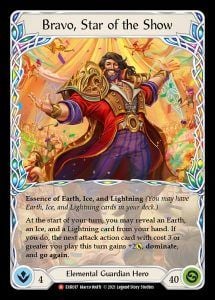
One of my favorite things about Flesh and Blood’s art is how it’s all firmly rooted in the game’s world, similar to Magic. One of my favorites being the card art for Meldoy, Sing-Along which both sets a scene and captures the essence of the hero.
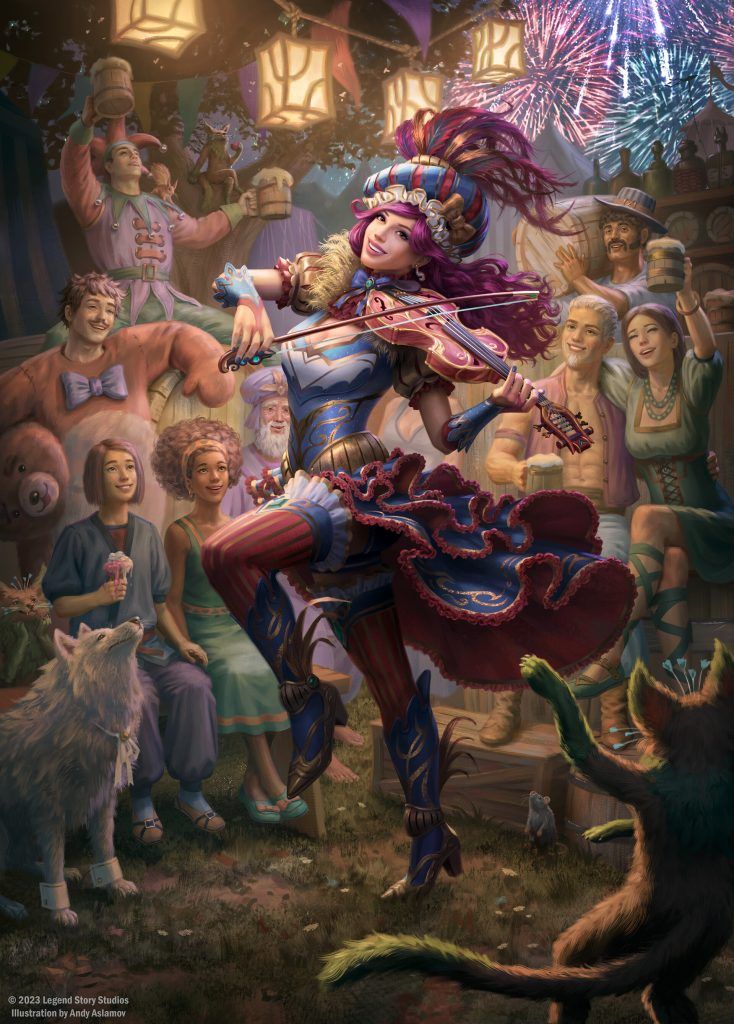
Melody Sing Along | Illustration by Andy Aslamov
Cost of Cards: Like other TCGs, there are some collectible promos for Flesh and Blood that have made their way up into five digit price tags. However, Flesh and Blood does seem to do a decent job keeping good cards affordable if you’re just looking for the cheapest version.
Fyendal’s Spring Tunic is one of the best equipment cards in the game; however, it was already reprinted four times within the first 13 expansions. This has helped keep the price more reasonable.
That being said, I won’t pretend Flesh and Blood is cheap. If you want to play casually, you can do so at a reasonable price, but competitive decks can creep up into the thousands of dollars pretty easily.
#1. Magic: The Gathering
Accessibility: Wizards of the Coast tries a lot of different ways to make Magic accessible to new players. One method is the various products that are ready to play out of the box. On the low end for a very casual introduction you have the Starter Kits which come with two decks. Originally these were around $10 but they did unfortunately get more expensive lately. Still $20 for two decks isn’t bad.
There are also preconstructed decks for a variety of playstyles like Commander, Pioneer, Standard, etc. These products make it easy to get into the game in the specific way you want to.
Magic can be a little more complex than other card games, especially as keyword abilities keep piling up. While this depth is an appeals to me, it can also make it a little more difficult for new players to feel like they can really be competitive.
Fun: Probably not surprising given that writing about Magic is one of my jobs, but it’s my favorite card game mainly because of how fun it is. It’s complex enough that I feel like I’m still learning more about the game all the time. There’s also a massive card pool which makes deck building a lot of fun, since there are so many options.
Thanks to the popularity of Commander, Magic can also be a very social game which is something I find lacking in a lot of TCGs. Having the option to sit around the table with a group of friends or even just strangers at the LGS and have a conversation while playing is a nice way to keep the game from always just being competitive.
Ways to Play: Wizards lists over 20 official formats that you can play either on paper or on one of its online clients. I’m not going to go through every single one, but this massive variety means that it’s easy to find a way to play the game how you like it best.
Magic is also the best environment for drafting that I’ve experienced because the design team puts so much care into making sure sets work well for Limited play.
Art: Magic has some of the best artwork of any TCG. It helps that the game has the clout to attract very talented artists with a variety of different styles to contribute to the game. For example, Seb McKinnon’s art on Soulherder. This art is on an uncommon card from a set, not a Secret Lair or some type of promo project.
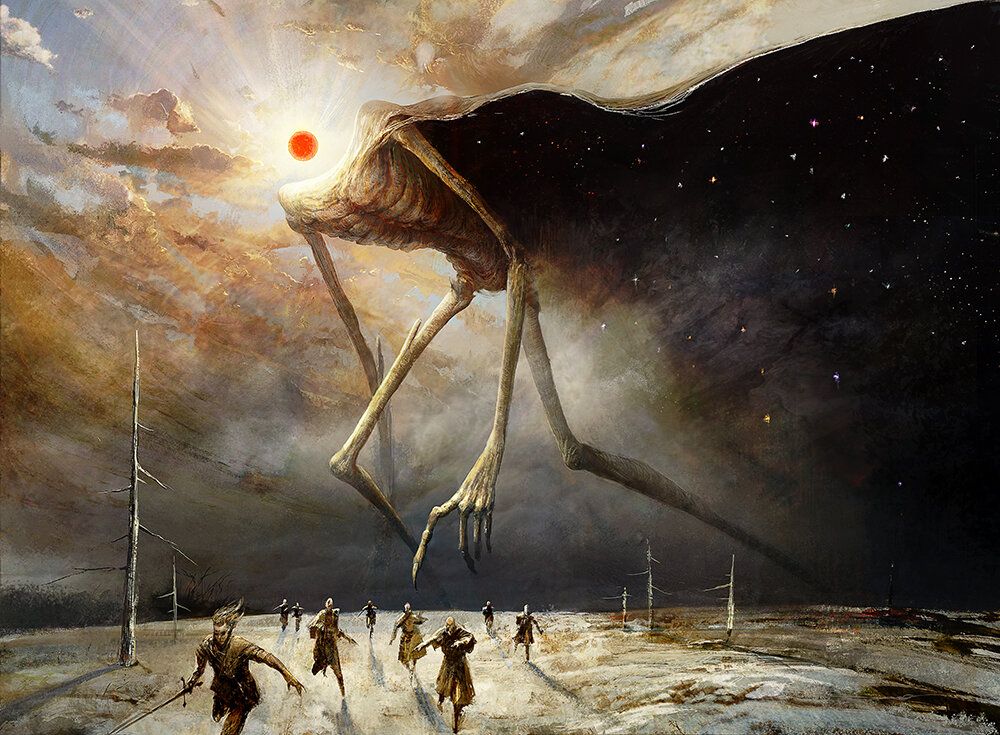
Soulherder | Illustration by Seb McKinnon
Not only is the art high quality, but certain sets and planes have distinct looks. Just by looking at Larry MacDougall’s artwork for Sygg, River Guide you can instantly tell that it’s from Lorwyn thanks to the plane’s unique art style
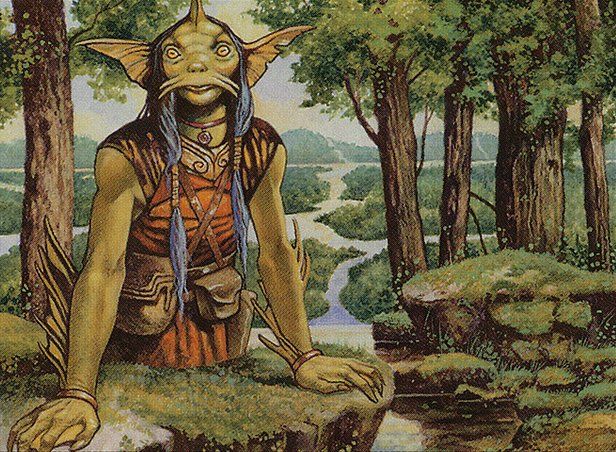
Sygg, River Guide | Illustration by Larry MacDougall
Cost of Cards: If you want a detailed breakdown on the financials of MTG, you should check out our related article for a deeper picture. For a quick overview, Magic can be pretty expensive, especially if you want to play competitively in formats like Legacy or even Modern. That being said, there are cheaper ways to play and plenty of resources for making budget decks, especially for Commander.
On the collectible side of things, the controversial Reserved List can tend to keep prices of certain cards very high. This is good for collectors but can be bad for people who just want access to the functional game pieces.
Conclusion
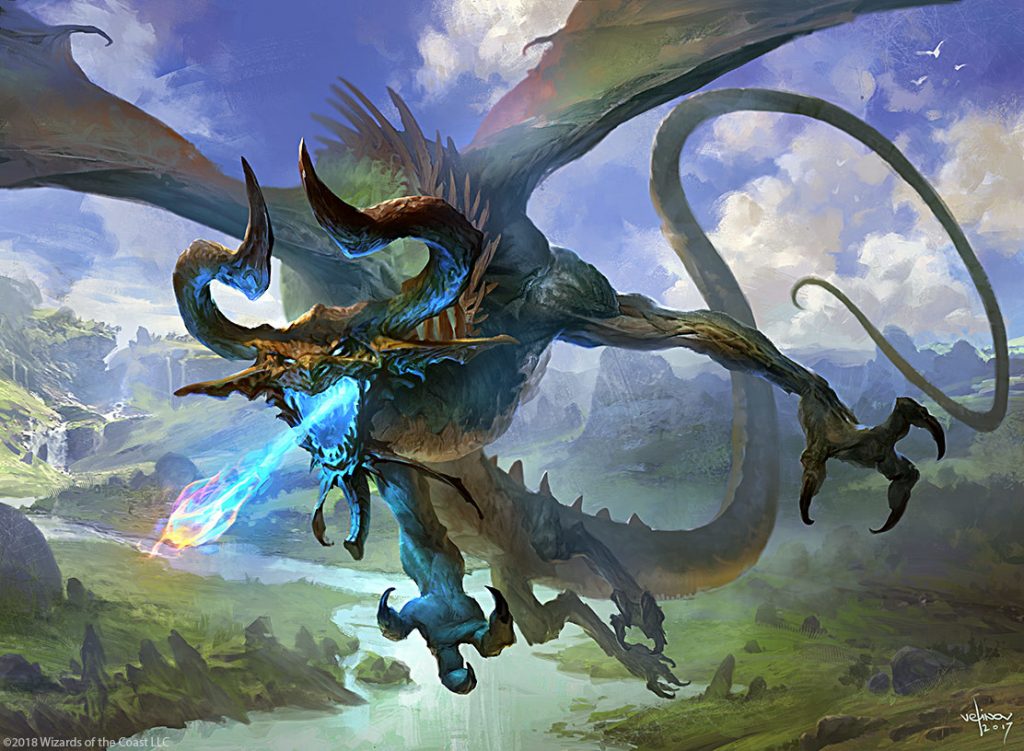
Nicol Bolas, the Ravager | Illustration by by Svetlin Velinov
While Magic is unsurprisingly the number one TCG that I’ve played, that doesn’t mean you should just stick with it and not test out the others. I would strongly recommend giving Flesh and Blood a try in particular. Something like Disney Lorcana can be a great game to play with the kids in your life since it’s a bit simpler and has the appeal of recognizable characters. Overall, I think most of these games are worth at least trying once.
What other TCGs do you play besides Magic? Any thoughts on Dragon Ball Super, One Piece, or any other games not on this list? Let me know in the comments or on Draftsim’s X (formerly Twitter).
Thank you for reading and I look forward to seeing you on the next article!
Note: this post contains affiliate links. If you use these links to make a purchase, you’ll help Draftsim continue to provide awesome free articles and apps.
Follow Draftsim for awesome articles and set updates:

Add Comment